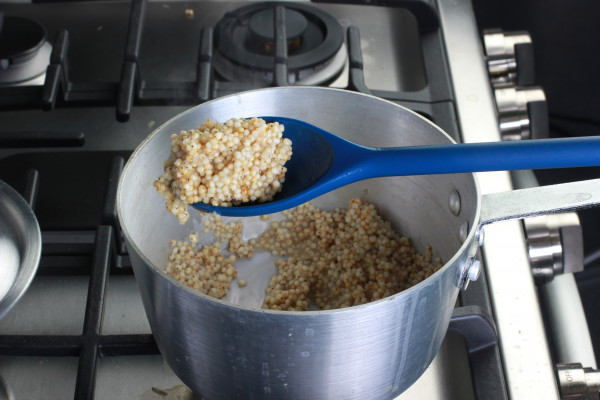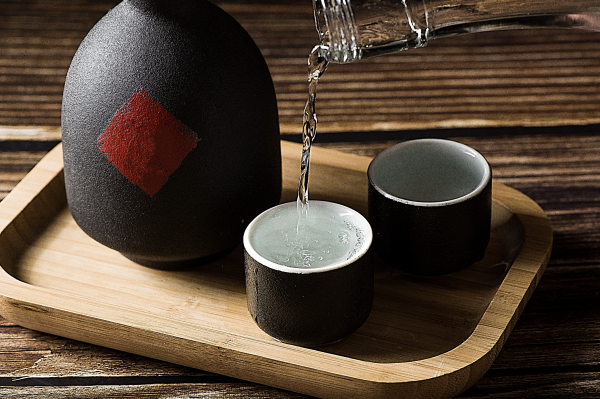
Around The Globe
Over the last few years, sorghum has grown in popularity as a healthy, versatile food in the U.S. Yet, the ancient grain has been a food staple around the world for thousands of years. Sorghum has been the dietary foundation of more than 500 million people in 30 countries. In fact, sorghum is the fifth most important cereal grain crop in the world, largely because it grows well in an array of environments. The U.S. ranks as the largest producer of sorghum grain.

Japan
Sorghum is creating a stir as a specialty, high-end food product in Japan where health benefits play a more important role for consumers than price. Japanese consumers enjoy sorghum in pancakes, pasta and more traditional meals like salmon rice balls. While Japanese shoppers currently consume several hundred tons of food-grade sorghum per year, experts predict they will use more sorghum in the future because it’s a fresh alternative that provides a range of health benefits from high fiber to beneficial antioxidants.

China
China is one of the leading importers of U.S. grain sorghum for many applications and has a long-standing history of using sorghum in alcohol production.

African Countries
Sorghum was first cultivated in Africa and was uniquely adapted to grow in similar climates. Serving as Africa’s second most important cereal grain in terms of tonnage, sorghum is an important food grain for many African countries. The United States helps meet African food needs by exporting sorghum through food aid efforts. In Africa, sorghum is often used for fermented bread, such as kisra and dosa, and stiff porridges, such as ugali, tuwo, karo and mato. Both boiled whole and pearled sorghum are consumed throughout Africa, and couscous made from sorghum can be found in West Africa.

Vietnam
The Sorghum Checkoff and U.S. Grains Council recently supported a feeding trial with catfish in Southeast Asia. The results showed sorghum can be successfully substituted for cassava, a common feed ingredient in aquaculture. The study creates potential for sorghum use in aquaculture nutrition programs and a new market opportunity for U.S. producers. Read the U.S. Grain’s Council’s article.
Beef/Dairy Production
- Sorghum has a long-standing use in cattle production.
- Studies indicate similar production performance when sorghum is processed properly.
- Sorghum fits in well as a reliable ingredient in cattle diets.
- Sorghum has comparable energy content.
- Forage sorghum serves as a valuable feed ingredient.
For more detailed information regarding beef or dairy nutrition, please see our livestock feeding guides.
Swine Production
- Grain sorghum and sorghum DDGS provide an excellent opportunity for swine producers and feed suppliers to lower feed costs.
- Sorghum requires less supplemental inorganic phosphorus than corn.
- Sorghum has successfully been used in swine bound for international marketplaces with no adverse effect. In fact, pork products raised with sorghum have satisfied the most product-conscious consumers in Japan and Europe.
For more detailed information regarding swine nutrition, please see our livestock feeding guides.
Poultry Production
- Sorghum can be used as a primary ingredient with few changes in other ingredients.
- The digestibility of crude protein in sorghum was higher than corn in past research trials.
- It is possible to process sorghum to improve the availability of nutrients.
For more detailed information regarding poultry nutrition, please see our livestock feeding guides.
Renewables Industry
- Sorghum maintains similar ethanol yields to other feedstocks.
- Sorghum can qualify as an advanced biofuel feedstock.
- Sorghum provides high-quality distillers grains that serve the livestock industry.
- Sorghum serves as a versatile grain, biomass or sugar feedstock.
Exciting New Sorghum Uses
- There are extensive new consumer food products available on grocery store shelves, including niche and mainstream brands.
- Sorghum has potential health benefits.
- Sorghum is used as a feed ingredient in a number of pet food brands and is now researching its use in aquaculture.
- Sorghum is also a component of packing peanuts, loose-fill insulation and many other products with the opportunity for many more.

